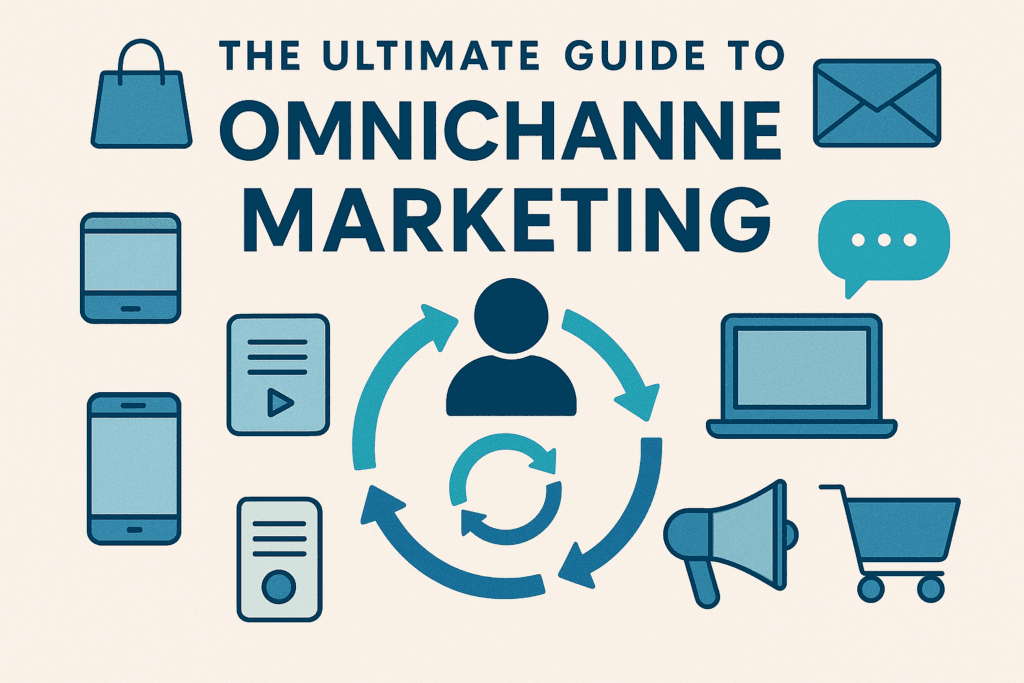The Ultimate Guide to Omnichannel Marketing

How to Build a Seamless, High-Converting Brand Experience in 2025
In a world where your customer starts their journey on Instagram, continues it via Google, checks reviews on YouTube, and ends up buying on your mobile app—or maybe in your physical store—the old rules of marketing no longer apply. Welcome to the era of omnichannel marketing: where consistency, context, and connectivity aren’t optional—they’re everything.
This isn’t another buzzword-filled post telling you to “be everywhere.” This is your ultimate guide to doing it right.
What Is Omnichannel Marketing Really?
Let’s clear this up first. Omnichannel marketing isn’t just being active on multiple platforms (that’s multichannel). It’s about delivering a seamless and unified brand experience across all touchpoints—online and offline—centered around the customer.
Whether they’re browsing your Instagram page on their lunch break, getting a cart abandonment email on their commute, or chatting with a support agent on your website at midnight—their journey should feel connected and personalized.
💡 “Omnichannel isn’t a campaign. It’s an ecosystem.” – Neil Patel
Why It Matters Now More Than Ever
80% of consumers expect consistent interactions across departments (Salesforce).
Companies with strong omnichannel strategies retain 89% of their customers, compared to 33% for those with weak ones (Aberdeen Group).
The average customer uses 6 touchpoints before purchasing—and they expect each one to “know” them (Google Think Insights).
In 2025, experience is the new marketing. If you’re not building a fluid journey, you’re losing business to those who are.
The Core Elements of a Killer Omnichannel Strategy
1. Unified Customer Data
Let’s be real: you can’t deliver a unified experience without unified data. Integrate your CRM, POS, email platform, and social channels. Use tools like:
HubSpot CRM for centralized contact behavior
Segment or Klaviyo to sync customer actions across platforms
Shopify + Meta + Google Ads integrations for ecommerce unification
Your email campaign should know what your customer browsed on your app last night.
2. Platform-Specific Personalization
What works on LinkedIn won’t fly on TikTok. Don’t copy-paste campaigns. Customize tone, format, and intent:
Instagram = Visual storytelling
Email = Deep relationship building
SMS = Instant, time-sensitive actions
In-store = Personal consultation and brand immersion
Each touchpoint should feel native but tell the same story.
3. Real-Time Sync Between Channels
If a customer calls support after receiving a broken item, your next email shouldn’t ask them to “Review your order.” Sync your support platform (like Zendesk) with your email flow.
Omnichannel fails when departments don’t talk to each other.
Omnichannel in Action: Real Brands, Real Wins
Sephora
The gold standard. A customer can:
Try products virtually via their app
Get recommendations in-store synced with their app data
Earn rewards and get follow-up emails based on purchase history
Result? Customers don’t just shop—they build a relationship with the brand.
Nike
With Nike’s app, customers can:
Buy online and pick up in-store
Join virtual workouts
Unlock member-only products and content
Get notifications when local stores have new drops
This kind of connected experience drives loyalty beyond products.
How to Get Started (Without Losing Your Mind)
Audit your customer journey. Map out every touchpoint. Where are the disconnects?
Break down silos. Get marketing, sales, support, and product teams aligned.
Invest in the right tools. Focus on platforms that integrate easily and scale.
Start small, scale smart. Don’t try to “omnichannel” everything at once. Begin with 2-3 core channels and perfect them.
Measure what matters. Track CLV (Customer Lifetime Value), retention rates, and engagement across the funnel—not just clicks.
Final Thought: It’s Not About the Channels. It’s About the Customer.
Omnichannel marketing is not just a strategy. It’s a mindset shift. It’s about showing your customers that you see them—not as data points, but as humans with preferences, habits, and expectations.
In 2025 and beyond, your competitors won’t just be other brands—they’ll be every experience your customer has ever loved. Make yours one of them.
Ready to level up your customer journey?
Start building omnichannel on purpose—not by accident.
